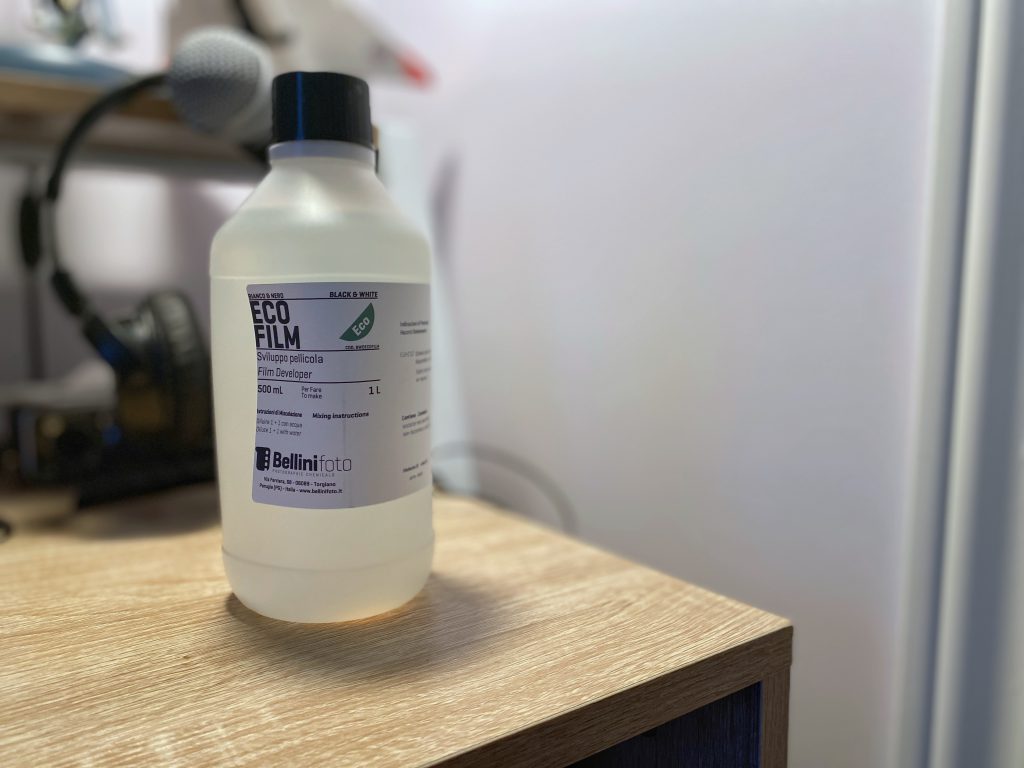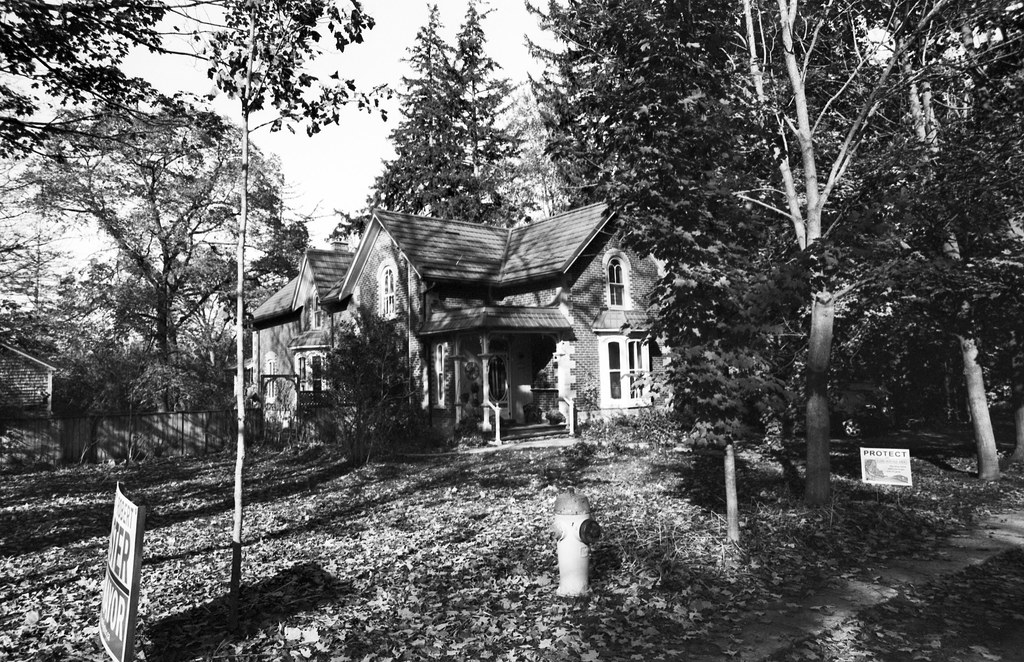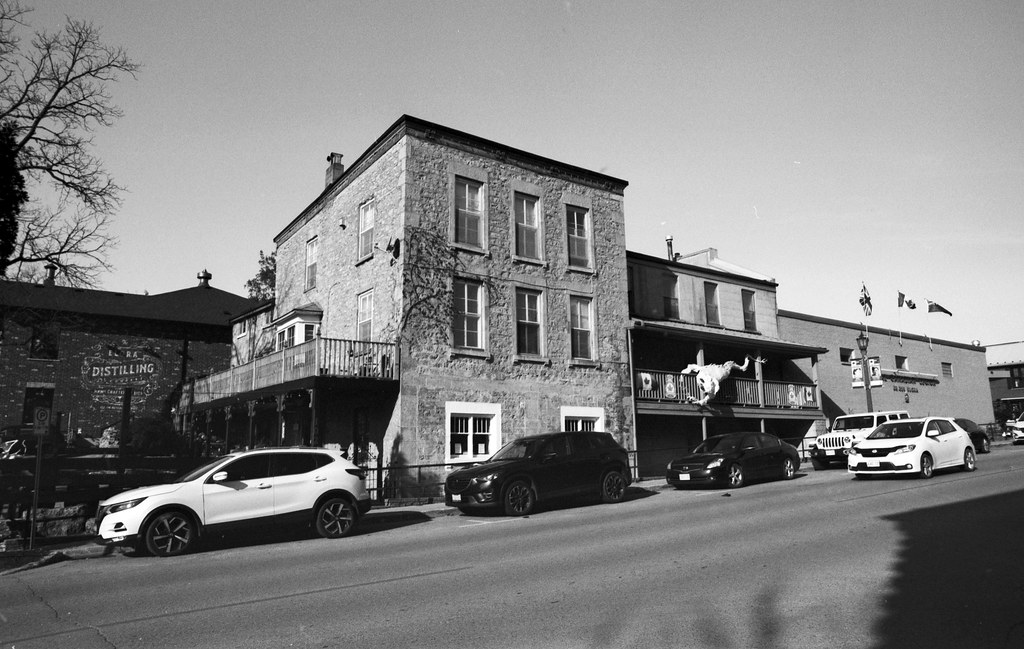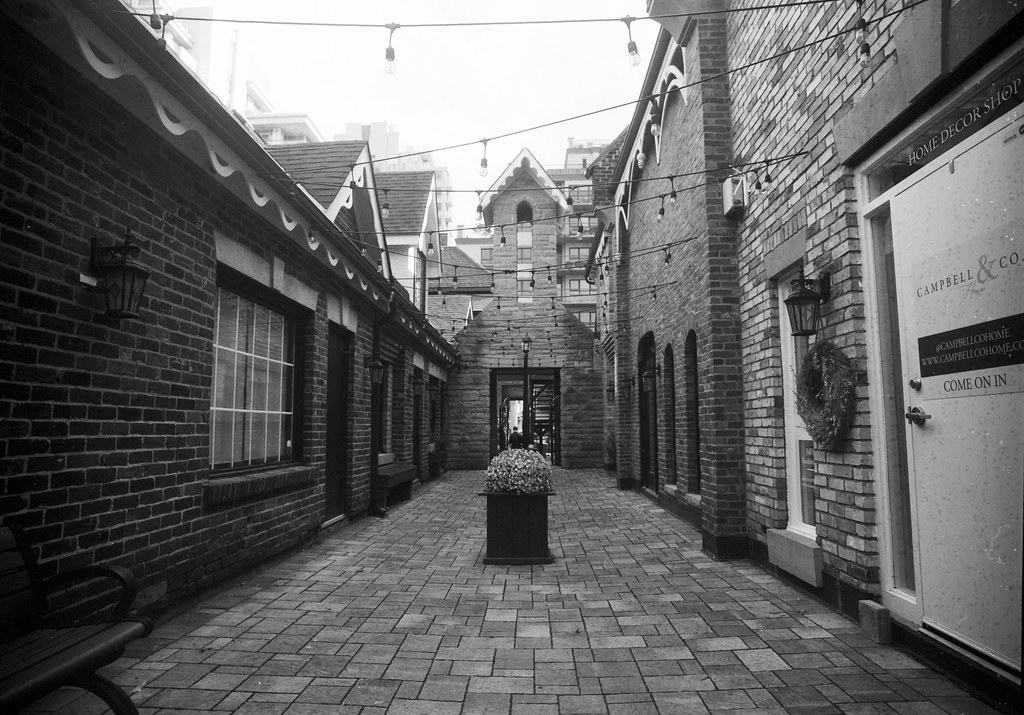There have been a lot of great releases of developers onto the market of late, including refreshes and clones of some of my favourites. And this won’t be the last time you see a clone of a beloved developer in this series. But with the dull grey days of winter starting to pile on, now is the time to begin using developers designed to help push development and ensure your fast films keep their fine grain. But there’s something that sets Bellini EcoFilm developer apart from other Xtol clones, such as Adox XT-3, which is that the concentrate comes in liquid form rather than powder. If you haven’t heard of Bellini, you will be forgiven; they are an Italian photochemical firm that only recently started to make headway into the North American market through Freestyle Photographic. And they have a wide range of B&W and Colour developers on hand, so to kick off my exploration of Bellini, let’s start with EcoFilm.

Technical Details
Manufacturer: Bellini
Name: EcoFilm
Primary Developer:
Type: Reusable/One-Shot
Mix From: Liquid




Handling
If there has always been one complaint from me about Kodak Xtol, mixing up and storing 5L of stock chemistry isn’t always possible when space is limited. Of course, you can decant it into five 1L bottles, but you still have to either store them all or give them away to a group of photographers. Of course, Kodak did try to produce 1L kits of Xtol in powder form, but they proved unstable. Last year I found Adox XT-3, a clone of Xtol that came in powder form in 1L and 5L volumes and discovered my love of the Xtol formula again. But powder can be tricky to mix up, and XT-3 could be overmixed. But EcoFilm comes in a liquid concentrate combined with water to make up 1L of stock solution. And it is easy to mix up the stock solution; combine 500mL of concentrate with 500mL of water to make 1L of working solution. While there is much debate over liquid verse powder, I’m a fan of both. But the one thing that’s for sure is that mixing a stock or working solution from a liquid is undoubtedly easier. Sadly the datasheet provided by Bellini does not include any details about the shelf life of the liquid concentrate or stock solution. If I had to guess, the unopened concentrate would last for 1-2 years, while in working solution 6-12 months in ideal conditions. But don’t quote me on those. Once in a working solution, you can use it as a stock solution or dilute it 1+1 or even 1+2. In stock form, you can reuse the developer for up to 15 rolls of 35mm or 120 or 60 sheets of 4×5 film. But the more you use the developer, you have to increase the developing time. Develop normally for up to 5 rolls of film, then increase by 15% for up to 10 rolls and 30% for up to 20. Once you start diluting from stock, the developer becomes a one-shot and is disposed of after developing.




Applications
While there are plenty of other clones of Xtol out there, most of these are mixed from powder. Now powder isn’t for everyone; it can get into the air, and people might have sensitive respiratory systems or not need large volumes of chemistry. You can get XT-3 in 1-litre kits, but if you over-mix, you can kill off the chemistry before using the developer. Thankfully liquid, despite having a shorter shelf-life, is mixed at room temperature without any trouble or stirring required; pour in the concentrate, add water to make up the total volume, and you’re good to go. You can mix the stock chemistry and use it the same day, as you mix everything at 20C (68F)! The best way to use EcoFilm is to push or pull your film in development, as it will tame grain and contrast. It works well with traditional cubic and modern tabular grain film for push processing. I successfully pushed Ilford HP5+ two-stops and Delta 400 one-stop, and EcoFilm quickly compensated for the under-exposure and produced some brilliant negatives. But you don’t have to limit yourself to fast films or push processing; when shooting at box speed, EcoFilm will help tame grainy films, for the most part. I found that it did not work too well on Fortepan 200. You don’t have to limit yourself to fast films; fine-grain and slower films also work well when developed in EcoFilm. And it works brilliantly when used in constant rotation during development without any uneven development.




Qualities
If you like what you get with Kodak Xtol or Adox XT-3, then Bellini EcoFilm will be a perfect match for you. Everything you want about those developers is present in EcoFilm. You get some control over the contrast, with a reduction in contrast. While some are in the Stock solution, more when you dilute the stock solution 1+1 and further. If you have a film with a strong contrast, like P30, you can see some reduction but don’t expect to see the contrast come down by significant amounts. There is plenty of grain reduction; even in fine-grain films, the grain is reduced. Thankfully it doesn’t soften the edges, and plenty of sharpness is retained. But these two qualities, while present in developing film shot at box speed, are most noticeable when pushing processing under-exposed films. Even when doing this at a one or two-stop compensation, I found that Delta 400 and HP5+ still looked terrific when push-processed and developed in EcoFilm. It doesn’t always work; if a film is too far with either contrast or grain, EcoFilm won’t do much to reduce these; Fortepan 200 and P30 are two examples.




Lowdown
Bellini Foto is a new player in the North American market and only starting to make inroads here. Right now, access to their products can be either done through an EU reseller and pay the shipping costs or, if you’re looking locally, Freestyle Photographic (which also has some hefty shipping costs). As an Xtol clone, EcoFilm is exactly what I had expected, being a good choice for large-volume processing, also push-processing films. It handles much easier than its powdered cousins; a single concentrate mixed 1+1 is much easier to mix up at room temperature, which means you can use it immediately. Plus, mixing up only a one-litre bottle does work well when space is an issue. And it seems to be Bellini Foto’s trademark; they also have a liquid version of D96 that I hope to try next year, along with some of their other developers. If you have a sensitivity to dust and powder, even with a low dust version (XT-3), then Bellini EcoFilm gives you the same power and qualities of Xtol but without a lot of hassles of mixing from powder.




Recommended Reading
Don’t just take my word on EcoFilm; check out these other blogs on the subject!
No Other Reviews Found!
I am going to try to use the eco film more and more instead of my beloved rodinal, for eco reasons. What I am finding is a nice surprise in how my negatives are coming out, especially with pushed films!
Dag Alex,
Als beginnende doka student hier een vraagje.
Wat bedoelen ze eigenlijk met ontwikkelen uit voorraad?
In de devchart zie ik dit soms ook staan bij de verdunning?
Wat bedoelen ze hier eigenlijk mee?
Dat is een uitstekende vraag, maar het kan een beetje verwarrend zijn! Er zijn dus ontwikkelaars die je mengt van een poeder of een vloeibaar concentraat met water om een voorraadoplossing te vormen, en Xtol en D-76 zijn de twee meest voorkomende. Voorraad betekent dat je het gebruikt zoals het is; je voegt geen extra water toe om de mix te verdunnen. Dit wordt aangegeven met de term “Stock” of 1+0. Ook kan voorraadverdunning worden hergebruikt voor een bepaald aantal rollen, afhankelijk van de ontwikkelaar en het totale volume. Dus zodra je de chemie van het poeder of vloeibare concentraat hebt gemengd, gebruik je het zoals het is. Ik hoop dat dit helpt.